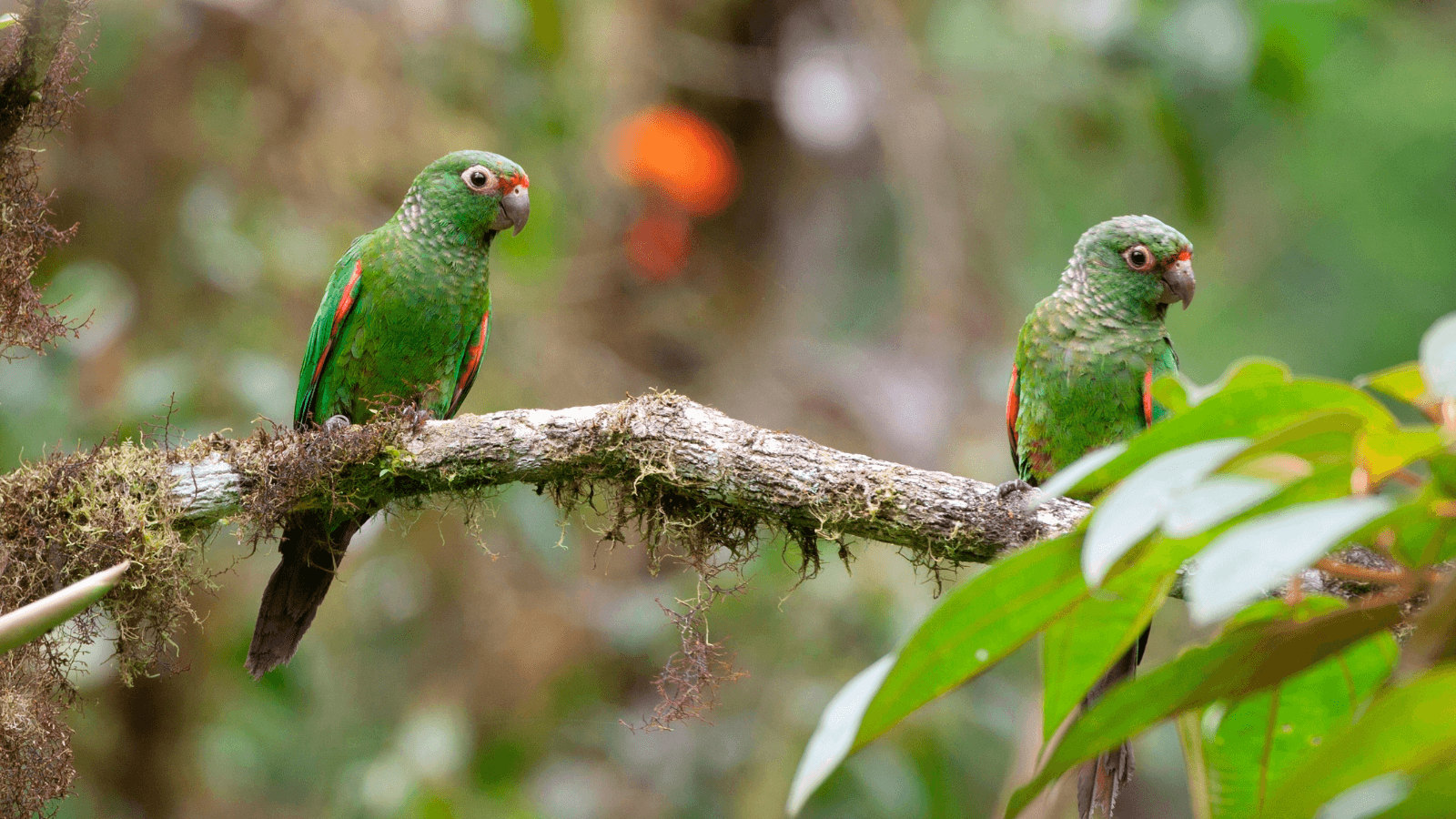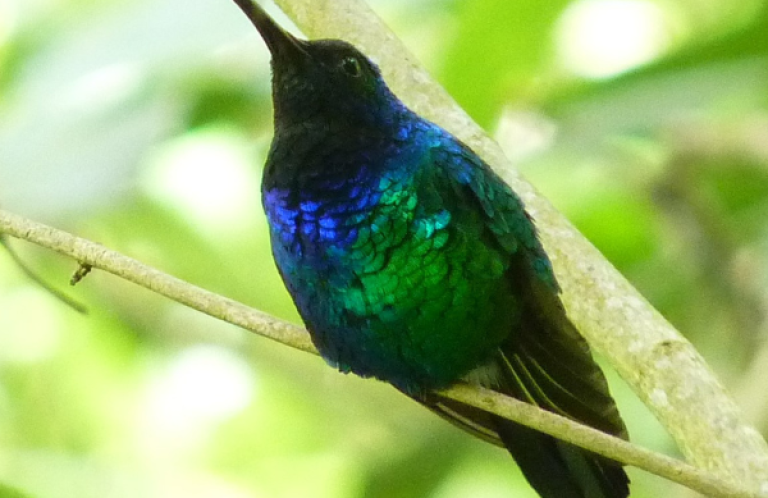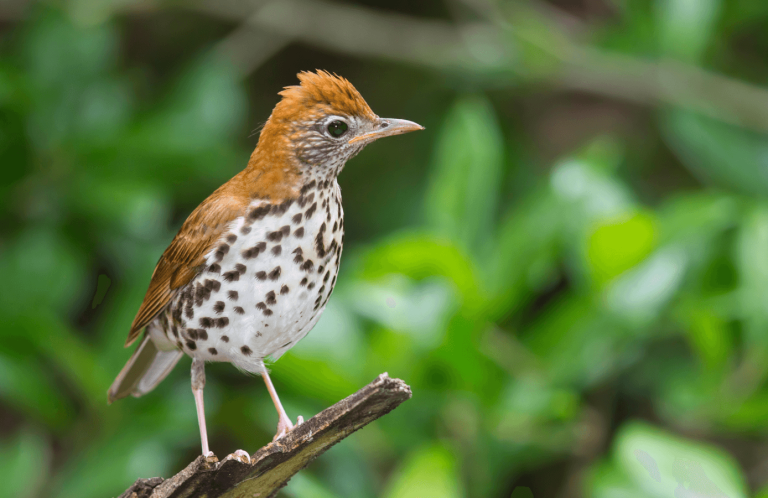Endangered Parakeet Gets More Protected Habitat Thanks to Conserva Aves Initiative

Thanks to generous support from the Bezos Earth Fund and other donors, American Bird Conservancy (ABC), one of two BirdLife partners in the Americas along with National Audubon Society and one of the leading organizations of the Conserva Aves Initiative, has worked with partner Fundación de Conservación Jocotoco (Jocotoco) to expand its bird-rich Buenaventura Reserve in Ecuador.
Conserva Aves is an innovative, ambitious, and long-term conservation initiative focused on creating and managing sub-national protected areas — what the initiative is calling “territories of life” — that improve ecological connectivity for threatened endemic and migratory bird species in Latin America and the Caribbean.
With an initial investment of $14 million, Conserva Aves is building a conservation legacy from Mexico to Chile. The Tropical Andes is a natural starting point due to its extraordinary biodiversity and the many threats it faces. Due to multiple factors, at least 70 percent of these Andean territories have been lost, putting more than 34,000 species of plants and animals at risk — half of them endemic. Nearly 11 percent of the birds of the Tropical Andes are under some degree of threat.
Rapid, scalable, and practical actions must be implemented to safeguard this biological, cultural, and economic heritage. For this reason, Conserva Aves aims to create 30 to 40 new protected areas amounting to 1.1 to 1.5 million acres (450,000 to 600,000 ha).
The Buenaventura Reserve, located in the Ecuadorian Andes, protects a narrow zone of piedmont cloud forest habitat in the country's El Oro province. The purchase adds 575 acres (233 ha) to Buenaventura and expands its total area to more than 15 square miles. It will bridge two previously separated parts of the reserve, increasing connectivity of vital cloud forest habitat essential to Endangered endemic species like the El Oro Parakeet and the El Oro Tapaculo.
Jocotoco established the Buenaventura Reserve in 1999 to provide a sanctuary for the El Oro Parakeet, a rare species only known to science since 1980. The bright-green bird, which currently numbers just a few hundred individuals, is only found in a small stretch of cloud forest in Ecuador. Only 5 to 10 percent of this forest still exists — the rest has been cleared for firewood, agriculture, and livestock grazing. Thanks to the efforts of Jocotoco, ABC, and partners, the cloud forest within Buenaventura is safe from these threats.
Since the reserve's establishment more than 20 years ago, Jocotoco has expanded it several times to protect additional habitat. This latest expansion represents an important milestone in the fight against the habitat fragmentation that plagues the region. The newly protected habitat includes intact cloud forest, but also some land degraded by agriculture. Natural regeneration is already visible on the degraded land, which will improve habitat connectivity in the medium-to-long term.
Buenaventura's variety of forest ecosystems and endemic birds has made it a popular ecotourism destination. More than 300 bird species call the Buenaventura Reserve home, including the rare Little Woodstar hummingbird and charismatic Long-wattled Umbrellabird. As the reserve continues to expand, it helps ensure that people will be able to continue to visit these birds in the wild for generations to come.
This expansion of the Buenaventura Reserve is the first in Conserva Aves' efforts to complete a network of high-biodiversity conservation areas across the Tropical Andes. In addition to ABC, Conserva Aves partners include the National Audubon Society, BirdLife International, and RedLAC.
ABC and Jocotoco gratefully acknowledge support for this project from the Bezos Earth Fund, BirdLife International, World Land Trust, and an anonymous donor.
###

Conserva Aves is protecting territories of life. It is an innovative, bold, and visionary conservation initiative with medium and long-term goals to benefit threatened endemic and migratory bird species and their habitats throughout Latin America and the Caribbean. It is an inclusive strategy for conservation and the fight against climate change through creating, consolidating, and managing protected areas for the benefit of birds, biodiversity, and present and future generations.
American Bird Conservancy (ABC) takes bold action to conserve wild birds and their habitats throughout the Americas. Inspired by the wonder of birds, we achieve lasting results for the bird species most in need while also benefiting human communities, biodiversity, and the planet's fragile climate. Our every action is underpinned by science, strengthened by partnerships, and rooted in the belief that diverse perspectives yield stronger results. Founded as a nonprofit organization in 1994, ABC remains committed to safeguarding birds for generations to come. Join us! Together, we can do more to ensure birds thrive.
The National Audubon Society (Audubon) protects birds and the places they need, today and tomorrow. Audubon works throughout the Americas using science, advocacy, education, and on-the-ground conservation. State programs, nature centers, chapters, and partners give Audubon an unparalleled wingspan that reaches millions of people each year to inform, inspire, and unite diverse communities in conservation action. A nonprofit conservation organization since 1905, Audubon believes in a world in which people and wildlife thrive. Audubon is a BirdLife partner in the United States.
BirdLife International is the world's oldest and largest international partnership for nature conservation. It has 119 passionate and committed partners across the globe who work under a local approach with a global impact to protect birds, their habitats, biodiversity, and people. It has six regional offices (Quito, Brussels, Amman, Nairobi, Singapore, and Suva) and a global office in Cambridge, UK. Join the flock! Facebook, Instagram, Twitter. (Global)
RedLac – The Latin American and Caribbean Network of Environmental Funds, RedLAC, is a community that strengthens the capacity of its members for conservation and sustainable development. Since its establishment in 1999, the network has been dedicated to promoting the interrelationships of Environmental Funds in the Latin-American region through capacity-building and knowledge management initiatives that favor the conservation of biodiversity and sustainable development in the area. RedLAC's environmental funds are leaders in the development of financial mechanisms that generate measurable impacts at local, regional, and global levels.
Media Contact
Jordan Rutter
Director of Communications
media@abcbirds.org


















































